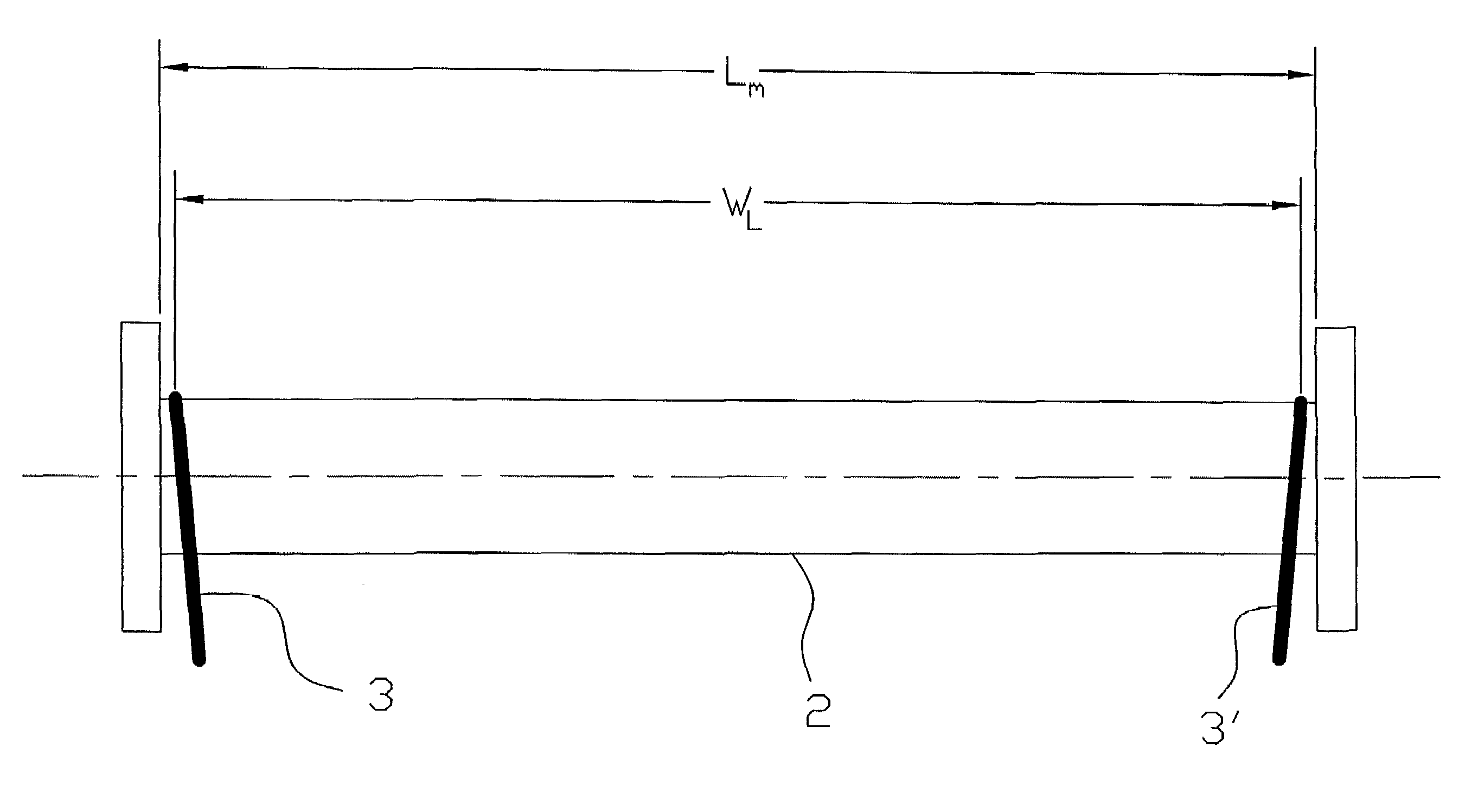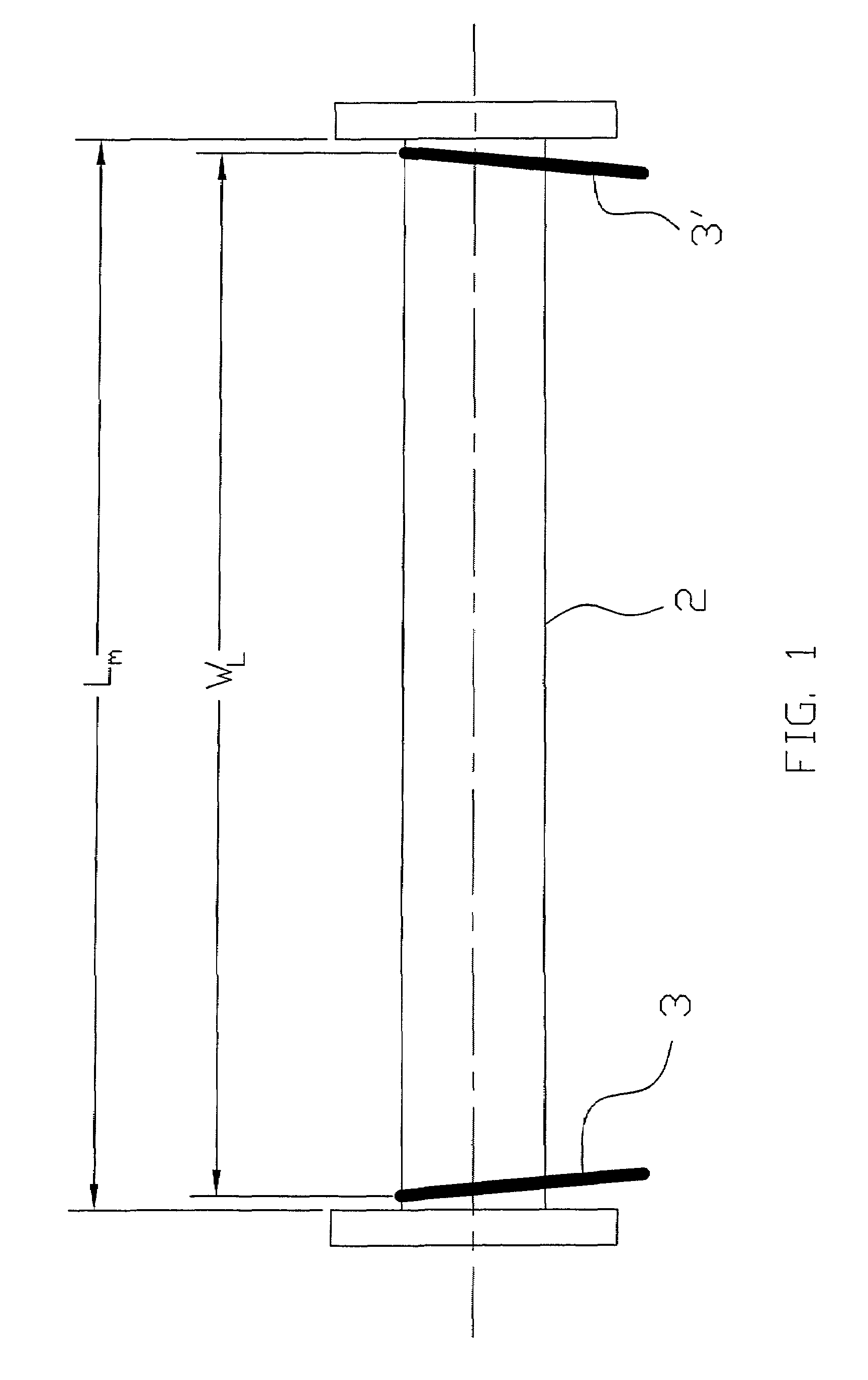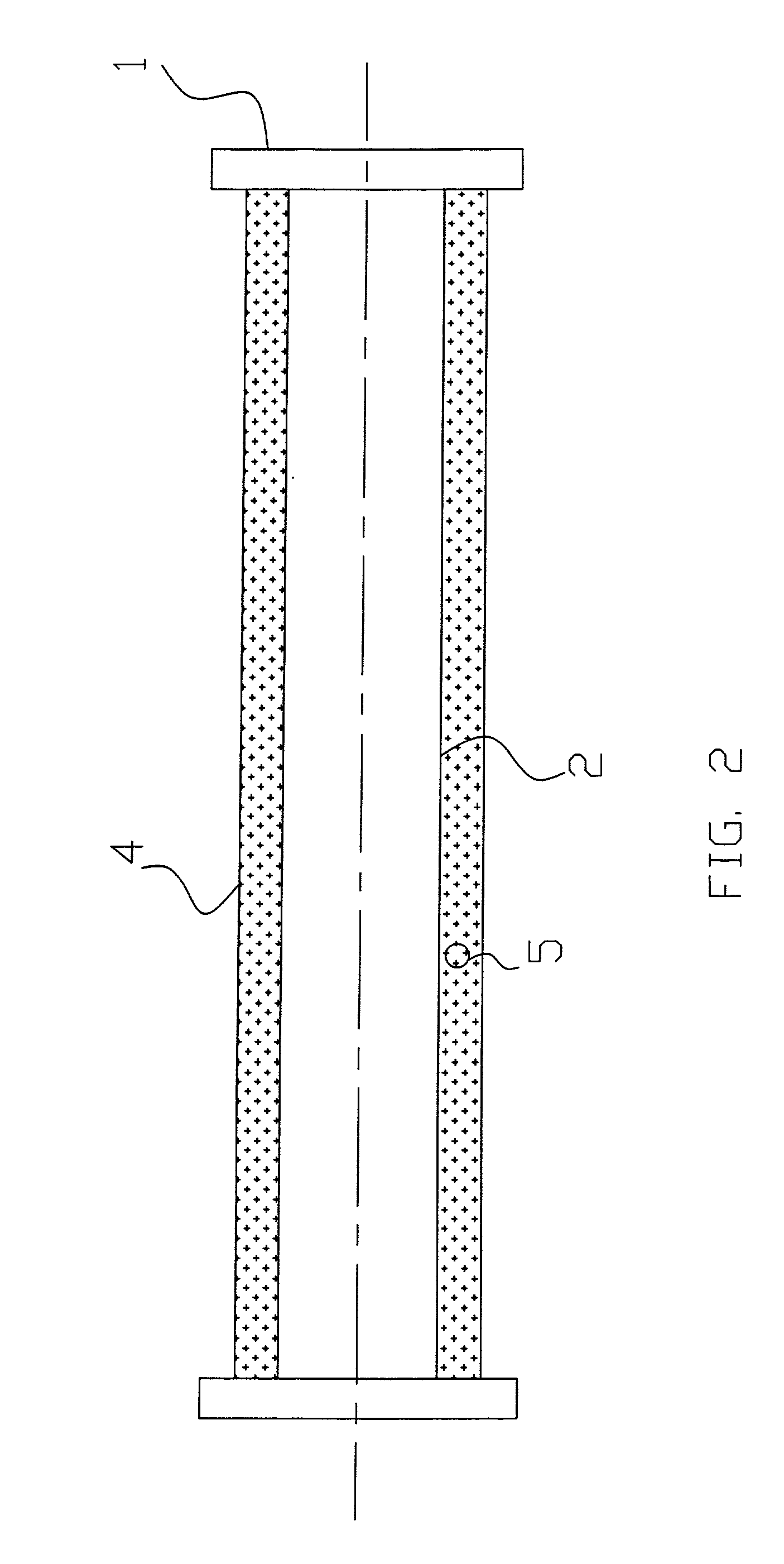Hybrid composite flywheel rim and its manufacturing method
a hybrid composite and flywheel technology, applied in mechanical energy handling, mechanical equipment, other domestic objects, etc., can solve the problems of low performance of such flywheel rotors, strain matching between, and speed typically limited to around 400 m/s
- Summary
- Abstract
- Description
- Claims
- Application Information
AI Technical Summary
Benefits of technology
Problems solved by technology
Method used
Image
Examples
Embodiment Construction
[0018]Turning to the drawings, wherein like characters designate identical or corresponding parts, and more particularly to FIG. 1 thereof, a mandrel 2 is shown for winding resin-impregnated tows in a fiber band 3 to produce an elongated annular composite “log”4, shown in FIG. 2, which can be cut into numerous shorter annular flywheel rims. The process and apparatus for winding the fiber tows onto the mandrel is illustrated in fUll detail in U.S. patent application Ser. No. 09 / 951,844 entitled “High-Speed Manufacturing Method for Composite Flywheels” filed on Sep. 11, 2001 by Christopher W. Gabrys and assigned to the assignee of this application. The disclosure of this application Ser. No. 09 / 951,844 is incorporated herein by reference.
[0019]The mandrel 2 has two end flanges 1 which help confine the resin-impregnated fiber tows on the ends of the mandrel 2 as the fiber band 3 is being wound. The length (Lm) of the mandrel 2 is the full length between the facing surfaces of the two f...
PUM
| Property | Measurement | Unit |
|---|---|---|
| speeds | aaaaa | aaaaa |
| speeds | aaaaa | aaaaa |
| elastic moduli | aaaaa | aaaaa |
Abstract
Description
Claims
Application Information
 Login to View More
Login to View More - R&D
- Intellectual Property
- Life Sciences
- Materials
- Tech Scout
- Unparalleled Data Quality
- Higher Quality Content
- 60% Fewer Hallucinations
Browse by: Latest US Patents, China's latest patents, Technical Efficacy Thesaurus, Application Domain, Technology Topic, Popular Technical Reports.
© 2025 PatSnap. All rights reserved.Legal|Privacy policy|Modern Slavery Act Transparency Statement|Sitemap|About US| Contact US: help@patsnap.com



